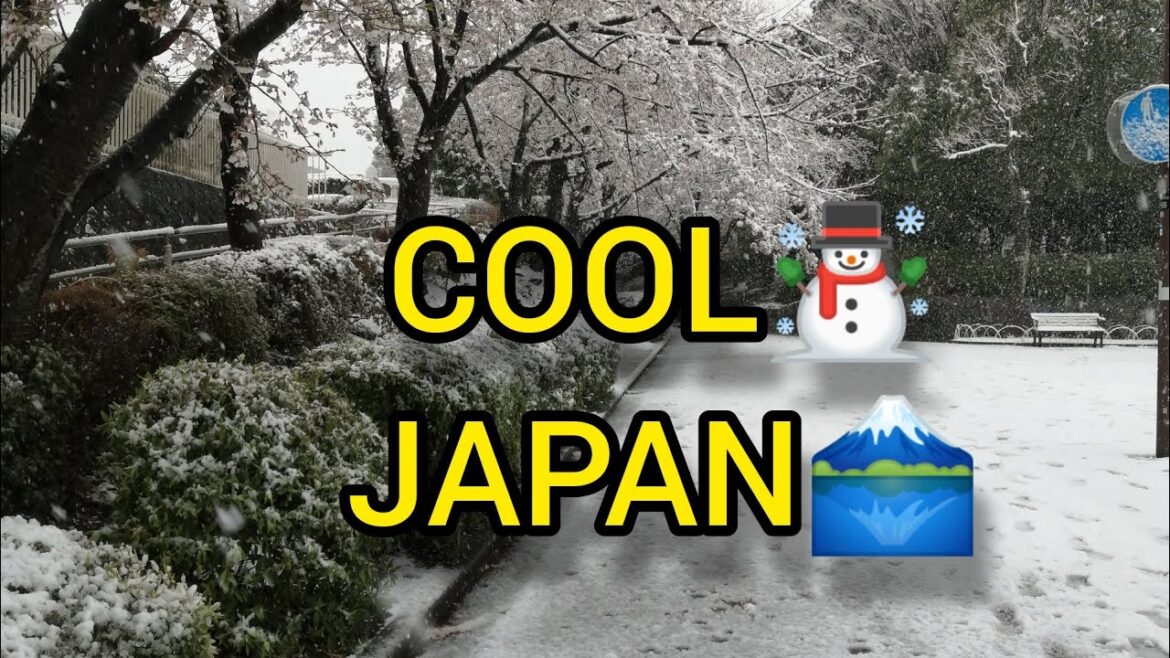In March, rare Snowfall in Japan. also Sakura on the peak.
A cherry blossom is a flower of many trees of the genus Prunus. The most well-known species is the Japanese cherry, Prunus serrulata, which is commonly called sakura (桜 or 櫻; さくら).
They are widely distributed, especially in the temperate zone of the Northern Hemisphere including Japan, Taiwan, Korea, Mainland China, Nepal, India, Pakistan, Afghanistan, Iran, Myanmar, Thailand, Europe, United States, Canada, and West Siberia. Along with the chrysanthemum, the cherry blossom is considered the national flower of Japan.
All varieties of cherry blossom trees produce small, unpalatable fruit or edible cherries. Edible cherries generally come from cultivars of the related species Prunus avium and Prunus cerasus.
HANAMI
“Hanami” is the centuries-old practice of drinking under a blooming sakura or ume tree. The custom is said to have started during the Nara period (710–794) when it was ume blossoms that people admired in the beginning, but by the Heian period (794–1185) cherry blossoms came to attract more attention, and hanami was synonymous with sakura. From then on, in both waka and haiku, “flowers” (花, Hana) meant “cherry blossoms”. The custom was originally limited to the elite of the Imperial Court, but soon spread to samurai society and, by the Edo period, to the common people as well. Tokugawa Yoshimune planted areas of cherry blossom trees to encourage this. Under the sakura trees, people had lunch and drank sake in cheerful feasts.
Woodblock print of Mount Fuji and cherry blossom from Thirty-six Views of Mount Fuji by Hiroshige
Every year the Japanese Meteorological Agency and the public track the sakura zensen (cherry blossom front) as it moves northward up the archipelago with the approach of warmer weather via nightly forecasts following the weather segment of news programs. The blossoming begins in Okinawa in January, and typically reaches Kyoto and Tokyo at the end of March or the beginning of April. It proceeds into areas at the higher altitudes and northward, arriving in Hokkaido a few weeks later. Japanese pay close attention to these forecasts and turn out in large numbers at parks, shrines, and temples with family and friends to hold flower-viewing parties. Hanami festivals celebrate the beauty of the cherry blossom and for many are a chance to relax and enjoy the beautiful view. The custom of hanami dates back many centuries in Japan. The eighth-century chronicle Nihon Shoki (日本書紀) records hanami festivals being held as early as the third century AD.
Most Japanese schools and public buildings have cherry blossom trees outside of them. Since the fiscal and school year, both begin in April, in many parts of Honshu, the first day of work or school coincides with the cherry blossom season.
The Japan Cherry Blossom Association developed a list of Japan’s Top 100 Cherry Blossom Spots[9] with at least one location in every prefecture.
IN 2020 Sakura Season
Surprise snowfall in Japan transformed springtime hanami into a winter wonderland on the weekend.
As the first month of spring comes to a close, the weather took an unseasonable turn on the weekend, with snow falling in Japan’s Kanto region, which encompasses Gunma, Tochigi, Ibaraki, Saitama, Tokyo, Chiba, and Kanagawa prefectures.
According to the Japan Meteorological Agency, a low-pressure front passed through the area on the morning of 29 March, turning rain to snow in the region from dawn until just after midday. More than one centimeter of snow fell — something that hasn’t been observed in the city center for 32 years.
.
.
.
.
.
.
.
.
.
.
.
.
.
.
.
.
.
.
.
.
.
.
.
.
.
.
.
Follow us on Instagram
https://www.instagram.com/namstey_japan/
Follow us on Facebook
https://www.facebook.com/NamasteyJapan/
Thank you


1 Comment
Very good update for Japan weather